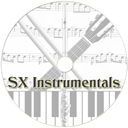Filter on ALL, SYNTH, DRUM, SAMPLER or MISC |
Total list currently 2405 items in 330 Brands |
Control Synthesis | Deep Bass 9 |
Description | The Deep Bass Nine was commissioned (circa 1994) by UK-based second-hand retailer FX Music Control as an alternative analog mono-bass-synth to satiate the demand for the Roland TB-303. Yes, this is another TB-303 clone. It's very simple and straightforward with basic controls that mirror those found on the TB-303. While it does not actually do a particularly good job at emulating the TB-303 sound, it is still a true analog MIDI-controlled bass synth with plenty of thumpin' bass potential of its own. The DB9 is a single-unit rack module with all ten of its knobs on the front panel. There are no hidden menus. Just like the TB-303, the DB9's single oscillator offers two waveforms to choose from - a sawtooth or square wave. That is followed by the 303-cloned Tuning, filter Cut Off Frequency and Resonance, Env Mod, Decay and Accent knobs. Additionally you can set the DB9 to one of the 16 standard MIDI channels, and you can set it to use its external audio input instead of the oscillator allowing you to process external audio through its analog filter (inputs and outputs are mono). Speaking of filters, a big part of the TB-303 sound is defined by its unique 18 dB/oct filter. Unfortunately the DB9 is not using an 18 dB/oct filter, which is one major factor contributing to its poor emulation the TB-303. The DB9 uses a 24 dB/oct filter which still sounds great - just not very 303-like. It also has a limited frequency cut-off control but a strong resonance control. The resulting sound, although not quite as sharp in the mid range as a TB-303, seems much more deep and warm. Of course, since the DB9 has no on-board TB-303-like sequencer, MIDI control is essential. The all-import Accent feature of the TB-303 is controlled here by MIDI note velocity - and turning up the Accent knob dials in how much it affects, not the volume of the note, but the filter's frequency and loudness. There is a hidden Glide control, although this is more like a portamento that seems to add some extra release on the envelope. The Glide and the Cut Off Frequency are the only two parameters that can be controlled via MIDI CC. Unfortunately, none of the knobs output MIDI CC data, which means all live control changes need to be performed and/or recorded live. There is also, sadly, no memory onboard for storing some of your settings. So you'll have to resort to old school patch setting storage techniques with the DB9. But on the bright side, the DB9 has a built-in CV/Gate converter with inputs and outputs. So it can either be used with some older pre-MIDI equipment you may have or it can be used to bring certain pre-MIDI equipment into the world of MIDI. There are better alternatives for a TB-303 clone out there (like the x0xb0x for instance) but the DB9 comes close. Its strength is that it has its own natural and warm unique sound which has many sweet spots. The sawtooth and square waves are very thick and full sounding, and you can push the resonance right up till it howls. It sits in a mix very well too, so it makes for an ideal dedicated bass synthesizer module. And they're fairly cheap too! |
| Brand | Control Synthesis |
| Model | Deep Bass 9 |
| Device | Synth |
| Type | Keys |
| Engine Type | Analog |
| Engine | VCO |
| Voices (max) | 1 |
| Oscillators | 1 |
| Engine Detailed | 1 VCO Square, saw or External audio in, |
| Filter (VCF) | 24 dB/oct |
| Envelope (VCA) | Decay |
| Keys | 25 |
| Key type | Keys |
| Velocity | Y |
| Aftertouch | No |
| Audio | Mono in/out |
| Midi | I-T |
| CV-gate | CV/GATE I-O |
| Extra info | TB303 clone |
| Produced: | 1994 - 1994 |
| Legend: | Obvious | Y: Yes, N: No, N/A: Not Applicable | |
| VCO | Voltage Controlled Oscillator | DCO | Digital Controlled Oscillator |
| LFO | Low Frequency Oscillator | Sub | Sub Oscillator |
| VCF | Voltage Controlled Filter | VCA | Voltage Controlled Amplifier |
| Velocity | As with a piano, the harder you hit a key, the louder the sound, unlike most organs which always produce the same loudness no matter how hard you hit a key. | Aftertouch | Pressing a key after you activated it. Channel Aftertouch, no matter which key, it will send a Channel message. Poly Aftertouch, sends the pressure per key instead of the whole channel. |
| Values for OSC, LFO, Filter, Envelope are per voice unless stated otherwise. | |||



